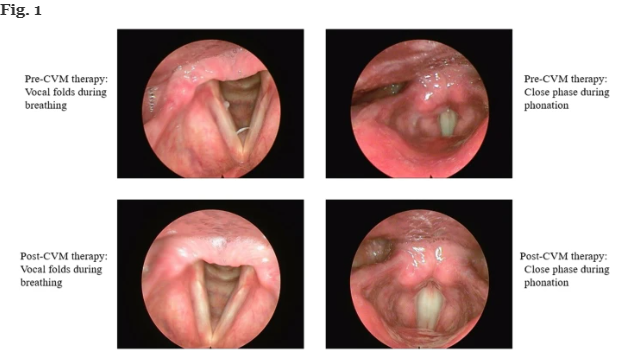Case Presentation: Muscle Tension Dysphonia
A 55-year-old Iranian man presented to the ENT specialist who diagnosed him with muscle tension dysphonia (MTD). He had tested positive for COVID-19 fifty days prior to seeing the doctor through reverse transcription real-time polymerase chain reaction (rt-PCR). The patient had no history of voice disorders or MTD diagnosis, did not consume alcohol or smoke, and had no family history of dysphonia. He was retired with no history to suggest that his vocal cords were overworked.
The patient experienced symptoms of COVID-19, including a fever, continuous dry cough, headache, and fatigue. Within ten days of symptom onset, he recovered without requiring hospitalization or medication, and his PCR came back negative. However, he experienced moderate hoarseness for 50 days after recovery, prompting a visit to an otolaryngology clinic.
Diagnostic Investigations: Multi-tier approach
For the investigation of this patient’s diagnosis of muscle tension dysphonia, doctors used four different approaches to assess various aspects of voice production before and after treatment. These approaches included auditory perceptual assessment, acoustic assessment, endoscopic imaging of the vocal folds, and voice self-assessment.
Auditory Perceptual Assessment
The auditory perceptual assessment used the Consensus Auditory-Perceptual Evaluation of Voice (CAPE-V), which is a tool for the clinical assessment of voice quality. The tool evaluated six voice-quality features: severity, roughness, breathlessness, strain, pitch, and loudness. Doctors told the patient to perform three tasks consisting of speaking vowels, reading sentences, and normal conversation. The doctors assessed the patient’s voice using a 100 mm line scale, with a score of 0 representing a normal voice and a score of 100 representing a severely affected voice. The voice samples were then assessed by two speech-language pathologists.
Acoustic Assessment
For the acoustic assessment, the doctors asked the patient to produce a sustained vocal three times. They recorded the voice with a frequency band of 100–12,000 Hz positioned approximately 10 cm from the patient’s mouth.
Endoscopic imaging
Doctors conducted endoscopic imaging by using a videolaryngostroboscopy with a FIEGERT LED Stroboscopy system. Speech-language pathologists assessed his mucosal wave, symmetry of vibration, glottal closure, and glottal area variation through imaging.
Voice self-assessment
Doctors used visual analogue scales (VAS) for voice self-assessment. They measure changes in moods and sensations when the patient cannot describe his experience in words.
Conclusion
All investigations indicated that the patient had a moderately deviant voice, which was due to Covid-19 complications.
Management
The study used several methods to assess the impact of the therapy on the management of muscle tension dysphonia. The results showed that the patient’s voice quality improved after ten therapy sessions. This therapy improves voice quality by reducing musculoskeletal tension and normalizing glottic and supraglottic contractions.
Muscle Tension Dysphonia (MTD): Covid-19 Complication
Severe acute respiratory syndrome coronavirus 2 (SARS-CoV-2) is a virus that causes coronavirus disease 2019 (COVID-19). COVID-19 primarily affects the respiratory system and commonly results in symptoms such as fever, coughing, headaches, pneumonia, and loss of taste and smell. In severe cases of COVID-19, patients may require intubation, which can result in significant laryngeal complications, leading to voice and swallowing difficulties. Even in less severe cases of COVID-19 where intubation is not required, patients may still experience breathing problems and coughing, leading to vocal fold damage, such as oedema or inflammation.
The aetiology of dysphonia in patients with COVID-19 is still unknown, but one way to investigate it is through videolaryngostroboscopic examination. Doctors diagnose patients with dysphonia into any of these four diseases: benign or malignant vocal fold lesions, neuromuscular or skeletal disorders of the larynx or functional disorders of the larynx. Muscle tension dysphonia (MTD) is a type of functional disorder caused by excessive tension of the laryngeal muscles. It can be primary or secondary and is commonly caused by upper respiratory tract infections.
Voice therapy is the most effective treatment for MTD including psychological and physical interventions. Psychological interventions include education about vocal function, vocal hygiene programs, and auditory training, whereas physical treatment includes chewing, yawn-sigh, and laryngeal manipulation. One of the laryngeal manipulation methods is the cricothyroid visor manoeuvre (CVM) method.




